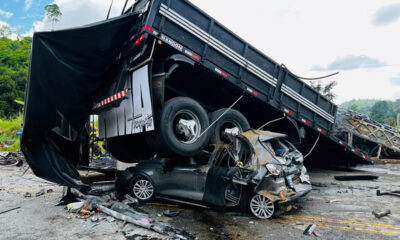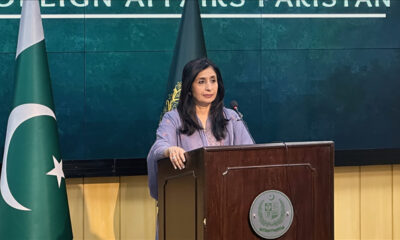COVID-19
China’s vast Xinjiang hit with COVID-19 travel restrictions
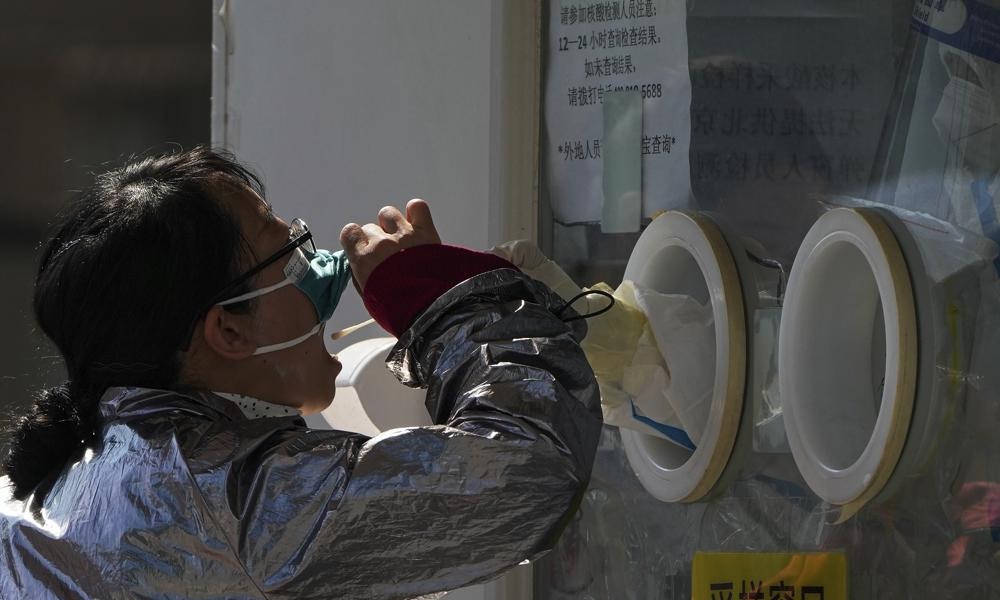
The sprawling Xinjiang region in western China has been hit with sweeping COVID-19 travel restrictions as the government ratchets up control measures across the country ahead of a key Communist Party congress later this month.
Trains and buses in and out of the region of 22 million people have been suspended, and passenger numbers on flights have been reduced to 75% of capacity in recent days, according to Chinese media reports.
A notice from the regional government on Tuesday said the measures were enacted to “strictly prevent the risk of spillover” of the virus. A Xinjiang official apologized for the spread of the epidemic to other regions and provinces in China, particularly in recent days, AP reported.
As is often the case with China’s draconian “zero-COVID” policy, the measures seemed out of proportion to the number of cases detected. The National Health Commission announced Thursday that 97 cases had been recorded in Xinjiang in the latest 24-hour period, after 91 cases were reported the previous day. All of them were asymptomatic.
Officials are desperate not to be called out for new outbreaks in their regions and Xinjiang has been under special scrutiny over the government’s establishment of a series of prison-like re-education centers in which Muslim minorities have been taught to renounce their religion and allegedly subjected to a range of human rights abuses.
Xinjiang’s vast surveillance system, relying on ubiquitous checkpoints, facial and even voice recognition software, and universal cell phone monitoring has made controlling travel among the population especially easy.
An earlier 40-day lockdown in Xinjiang left many residents complaining about inadequate food supplies.
“Zero-COVID” has been closely identified with Communist Party leader Xi Jinping, who is expected to receive a third five-year term in office at the congress beginning Oct. 16. That’s despite criticisms from the World Health Organization and massive disruptions to the economy, education and normal life in China.
Last month, a nighttime bus crash that killed 27 people who were being forcefully moved to a mass quarantine location in southwestern China set off a storm of anger online over the harshness of the policy. Survivors said they had been compelled to leave their apartments even when not a single case had been discovered.
“Zero-COVID” has been celebrated by the country’s leaders as evidence of the superiority of their system over the U.S., which has had more than a million COVID-19 deaths.
Xi has cited China’s approach as a “major strategic success” and evidence of the “significant advantages” of its political system over Western liberal democracies.
Yet even as other countries open up, the humanitarian costs to China’s pandemic approach have grown. With national and some provincial borders closed, tourism has all but dried up and the economy is forecast by the World Bank to grow by an anemic 2.8% this year. Xinjiang has been hit especially hard because of sanctions brought against some of its officials and products over human rights concerns.
Even without nationally identified criteria, testing and lockdowns have become the norm for tens of millions of people in China from the North Korean border to the South China Sea, as local officials desperately seek to avoid punishment and criticism.
Earlier this year in Shanghai, desperate residents complained of being unable to get medicines or even groceries during a two-month lockdown, while some died in hospitals from lack of medical care as the city restricted movement. All 26 million city residents in China’s largest city and financial hub have been ordered to undergo two additional days of testing this week, despite the announcement of just 11 new cases Thursday, none of which showed symptoms.
COVID-19
WHO declares end to COVID global health emergency

The World Health Organization said Friday that COVID-19 no longer qualifies as a global emergency, marking a symbolic end to the devastating coronavirus pandemic that triggered once-unthinkable lockdowns, upended economies and killed millions of people worldwide.
The announcement, made more than three years after WHO declared the coronavirus an international crisis, offers some relief, if not an ending, to a pandemic that stirred fear and suspicion, hand-wringing and finger-pointing across the globe, AP reported.
The U.N. health agency’s officials said that even though the emergency phase was over, the pandemic hasn’t finished, noting recent spikes in cases in Southeast Asia and the Middle East.
WHO says thousands of people are still dying from the virus every week, and millions of others are suffering from debilitating, long-term effects.
“It’s with great hope that I declare COVID-19 over as a global health emergency,” WHO Director-General Tedros Adhanom Ghebreyesus said.
“That does not mean COVID-19 is over as a global health threat,” he said, warning that new variants could yet emerge. Tedros noted that while the official COVID-19 death toll was 7 million, the real figure was estimated to be at least 20 million.
Tedros said the pandemic had been on a downward trend for more than a year, acknowledging that most countries have already returned to life before COVID-19.
He bemoaned the damage that COVID-19 had done to the global community, saying the pandemic had shattered businesses, exacerbated political divisions, led to the spread of misinformation and plunged millions into poverty.
When the U.N. health agency first declared the coronavirus to be an international crisis on Jan. 30, 2020, it hadn’t yet been named COVID-19 and there were no major outbreaks beyond China.
More than three years later, the virus has caused an estimated 764 million cases globally and about 5 billion people have received at least one dose of vaccine.
In the U.S., the public health emergency declaration made regarding COVID-19 is set to expire on May 11, when wide-ranging measures to support the pandemic response, including vaccine mandates, will end. Many other countries, including Germany, France and Britain, dropped most of their provisions against the pandemic last year.
When Tedros declared COVID-19 to be an emergency in 2020, he said his greatest fear was the virus’ potential to spread in countries with weak health systems.
Most recently, WHO has struggled to investigate the origins of the coronavirus, a challenging scientific endeavor that has also become politically fraught.
COVID-19
COVID-19 in Iran: Nearly 900 new cases, 24 deaths recorded
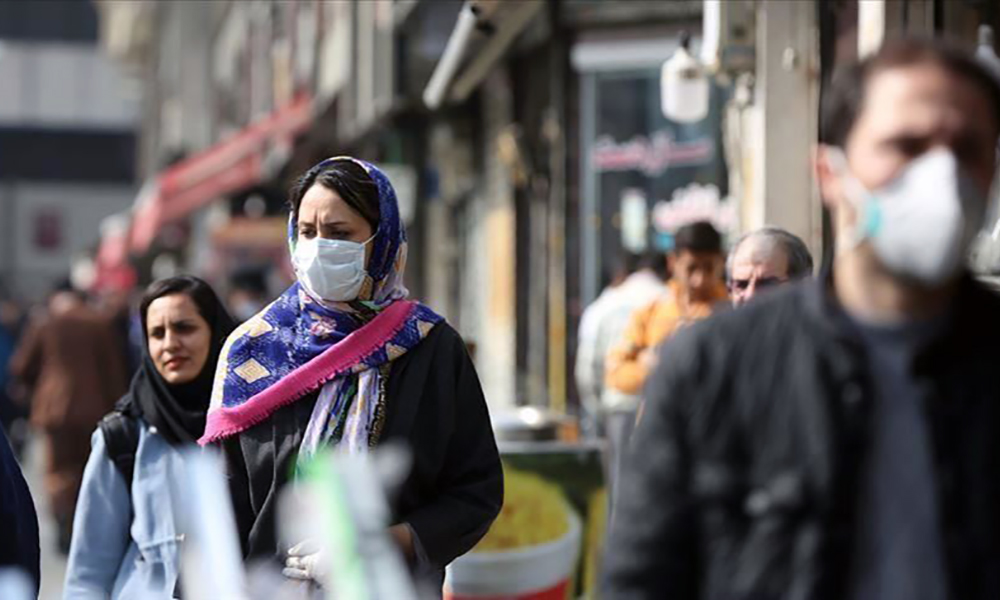
The Iranian health ministry announced on Sunday that more than 890 new cases of COVID-19 have been identified across the country during the past 24 hours, adding that 24 patients have died in the same period of time, Fars News Agency reported.
"A sum of 891 new patients infected with COVID-19 have been identified in the country based on confirmed diagnosis criteria during the past 24 hours," the Iranian Health Ministry's Public Relations Center said on Sunday, adding, "454 patients have been hospitalized during the same time span."
The ministry’s public relations center said 611 people infected with COVID-19 are in critical condition.
COVID-19
China says 200 million treated, pandemic ‘decisively’ beaten

China says more than 200 million of its citizens have been diagnosed and treated for COVID-19 since it lifted strict containment measures beginning in November.
With 800,000 of the most critically ill patients having recovered, China has “decisively beaten” the pandemic, according to notes from a meeting of the ruling Communist Party’s all-powerful Politburo Standing Committee presided over by President and party leader Xi Jinping, AP reported.
China enforced some of the world’s most draconian lockdowns, quarantines and travel restrictions and still faces questions about the origins of the virus that was first detected in the central Chinese city of Wuhan in late 2019. Heavy-handed enforcement prompted rare anti-government protests and took a heavy toll on the world’s second-largest economy.
The official Xinhua News Agency quoted Xi as saying that policies to control the outbreak had been “entirely correct.” The abrupt lifting in November and December of the “zero COVID” policy that had sought to eliminate all cases of the virus led to a surge in infections that temporarily overwhelmed hospitals.
Case numbers have since peaked and life has largely returned to normal, although international travel in and out of China has yet to return to pre-pandemic levels.
China is now transitioning to a post-pandemic stage after a fight against the outbreak that was “extraordinary in the extreme,” Xinhua said.
The government will continue to “optimize and adjust prevention and control policies and measures according to the times and situations with a strong historical responsibility and strong strategic determination,” Xinhua said.
-

 Sport4 days ago
Sport4 days agoZimbabwe’s opening ODI against Afghanistan abandoned
-

 World3 days ago
World3 days agoNorth Korean troops suffer 100 deaths, struggling in drone warfare, South Korea says
-

 Latest News3 days ago
Latest News3 days agoTwo horror accidents on Kabul-Kandahar highway leave 52 dead
-

 Latest News1 day ago
Latest News1 day agoAfghan men must stand with women to support viable future of country: US envoy
-

 Sport3 days ago
Sport3 days agoAfghanistan crush Zimbabwe by 232 runs in second ODI
-

 International Sports4 days ago
International Sports4 days agoLanka T10: Kandy Bolts in at 4th spot in playoffs after thrilling day
-
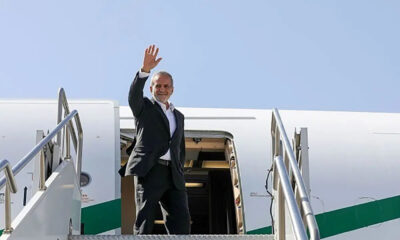
 Regional4 days ago
Regional4 days agoIran’s president to make rare visit to Egypt for D-8 summit
-

 Tahawol5 days ago
Tahawol5 days agoTahawol: Latest developments in Syria reviewed










